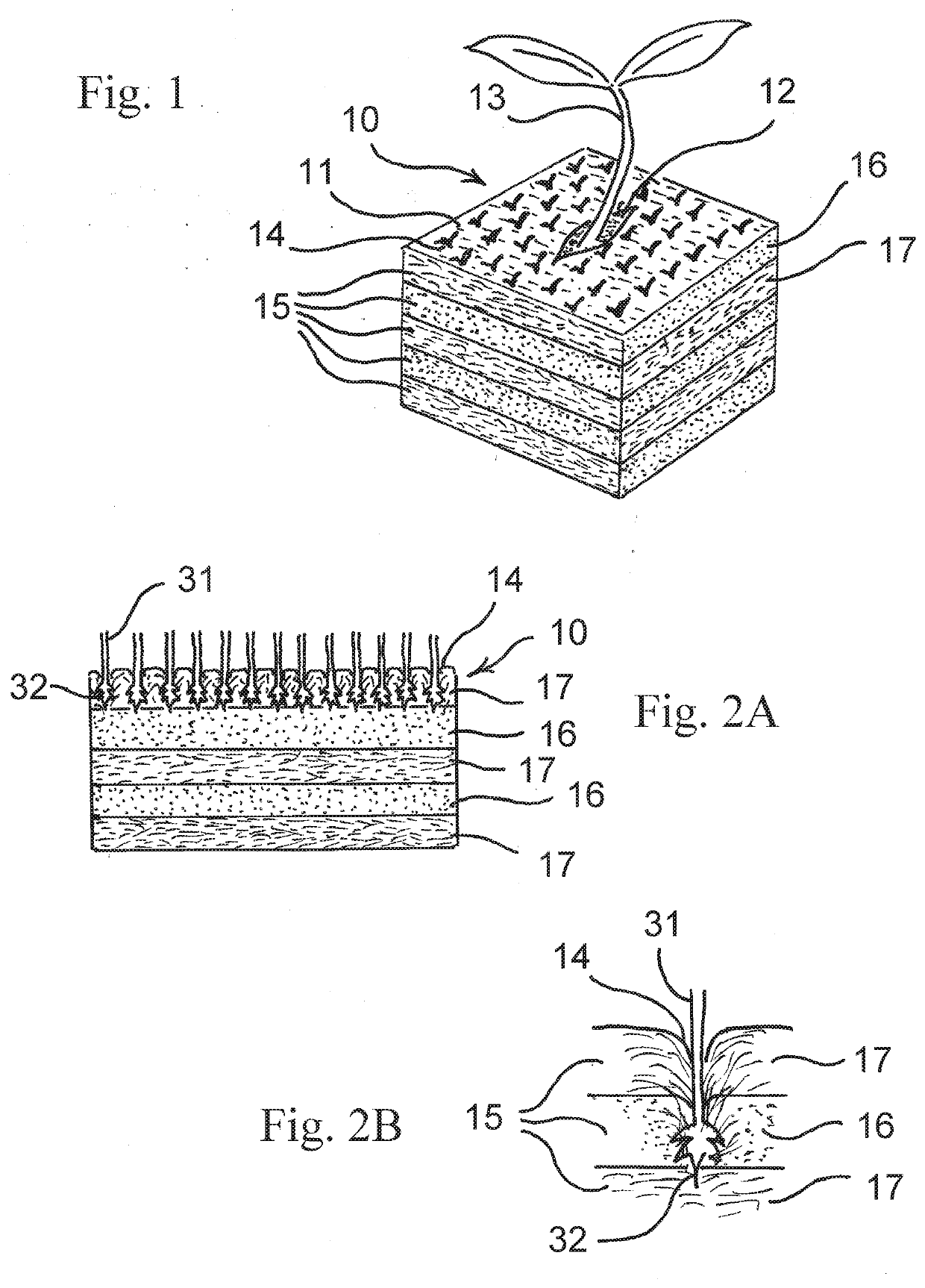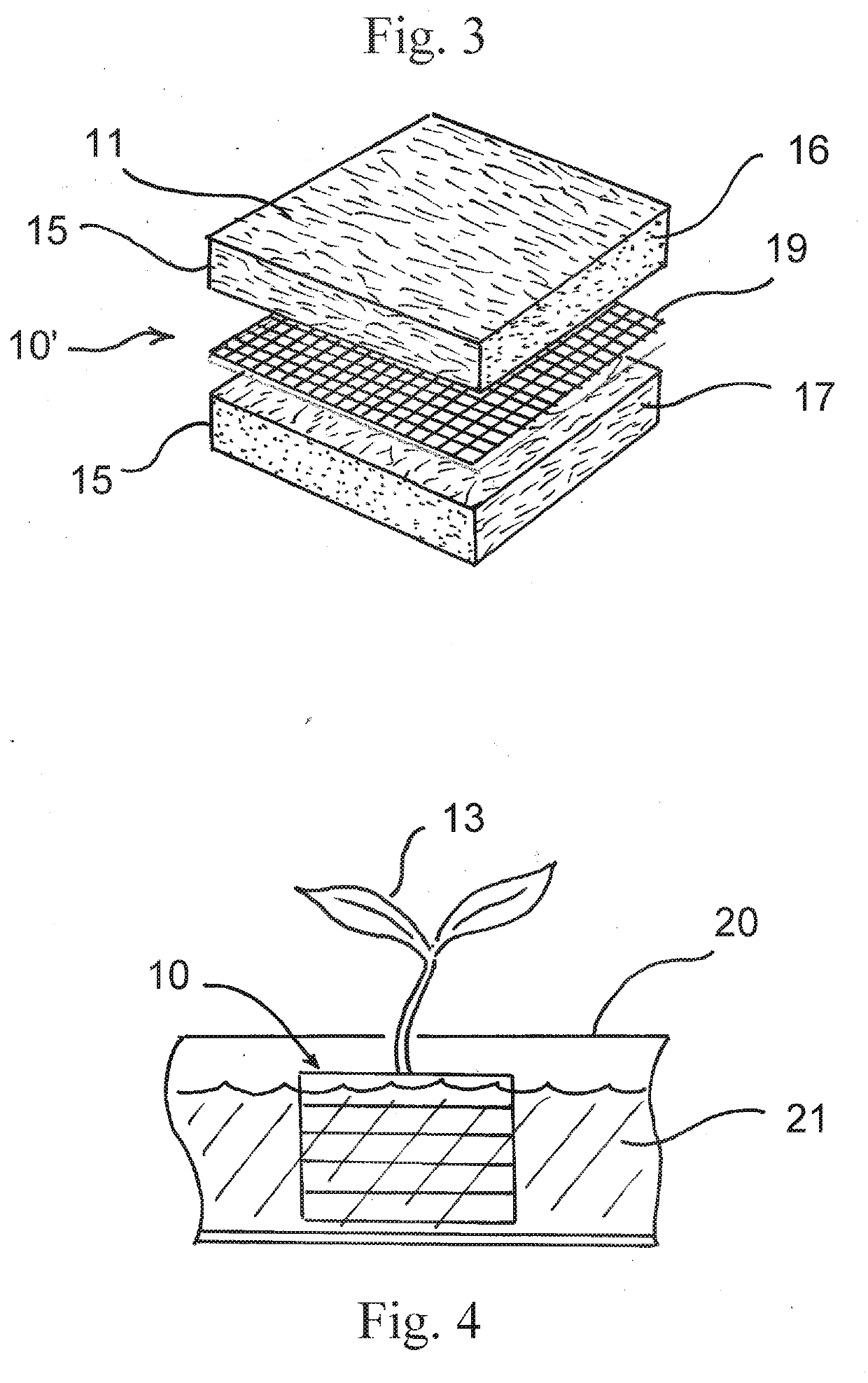Chemically treated animal fiber matrix plant cultivation composition
- Summary
- Abstract
- Description
- Claims
- Application Information
AI Technical Summary
Benefits of technology
Problems solved by technology
Method used
Image
Examples
Embodiment Construction
[0025]The present invention features a fibrous mat matrix 10 comprised primarily of animal wool fibers in layers 15 of battings, also referred to as bats, mechanically bonded, as described below. The wool of the bat layers is chemically treated with a compound containing thiol. The chemical treatment of clean wool fiber may be performed either prior to or after the felting process. A preferred chemical is thioglycolic acid in the form of ammonium thioglycolate, which increases its solubility. The keratin molecules in the wool fibers are arranged in straight bundles held together by disulphide bonds. The disulphide bonds are made by the cysteine amino acid. The cysteine of one keratin molecule forms a disulphide bond with the cysteine of the neighboring keratin molecule Ammonium thioglycolate (HSCH2CO2NH4), which contains a thiol group (—SH), breaks the disulphide bonds. The thiol group replaces one of the sulphur atoms in the disulphide bond:
Keratin-S—S-keratin+2HS—CH2CO2NH4→—HO2CH2...
PUM
 Login to View More
Login to View More Abstract
Description
Claims
Application Information
 Login to View More
Login to View More - R&D
- Intellectual Property
- Life Sciences
- Materials
- Tech Scout
- Unparalleled Data Quality
- Higher Quality Content
- 60% Fewer Hallucinations
Browse by: Latest US Patents, China's latest patents, Technical Efficacy Thesaurus, Application Domain, Technology Topic, Popular Technical Reports.
© 2025 PatSnap. All rights reserved.Legal|Privacy policy|Modern Slavery Act Transparency Statement|Sitemap|About US| Contact US: help@patsnap.com


